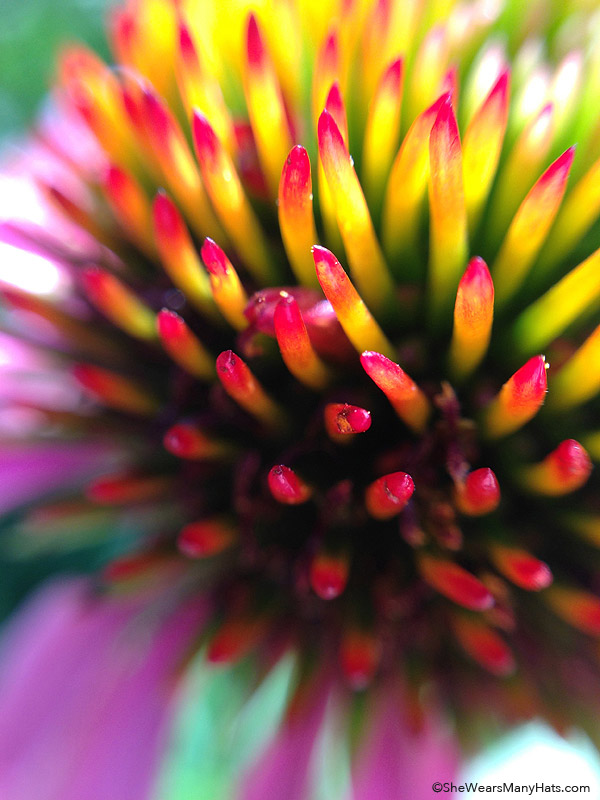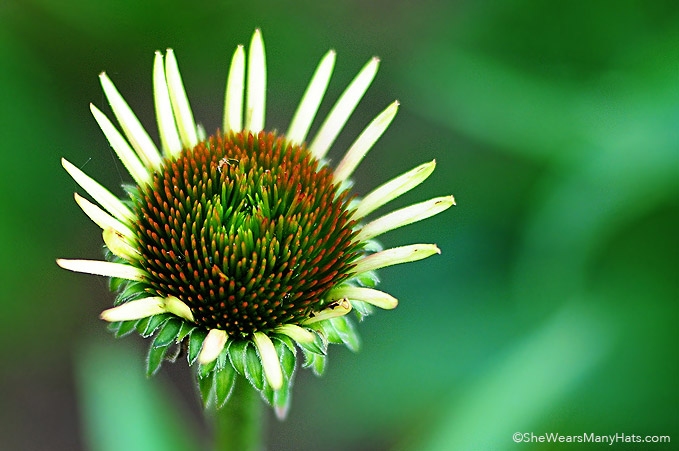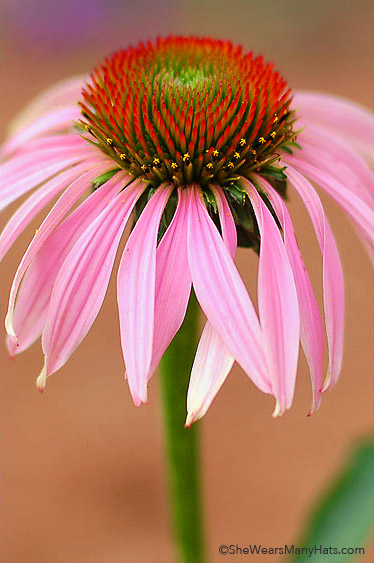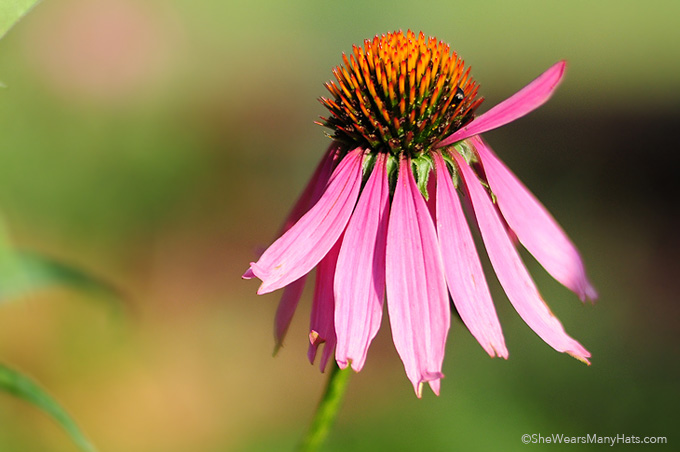Purple Coneflower Echinacea
This post may contain Amazon or other affiliate links. As an Amazon Associate I earn from qualifying purchases.
Armed with a bit of information and the right conditions, growing Purple Coneflower, or Echinacea, is easy to do in your own garden.
These Purple Coneflower, otherwise known as Echinacea, are popping up all over our yard. We originally planted them in just a few places, but they have happily reseeded in other spots all around our home. We plan on letting them I’ll letting most of them stay where they spring up. It’s fun to have a splash of color where you don’t expect it. And they are certainly not hurting anyone or anything.
One of the places the coneflower has found a new home is in our herb garden, which is quite appropriate given Echinacea’s possible health benefits. It is used widely to make tea with hope of helping to boost the immune system, as well as other antiviral properties. Parts of the roots and newly formed flower tops are harvested, then dried, and used to make the tea. I’ve never done that, but I may get around to trying it one day. I’d love to hear if you have any information about that. I have made tea with our prolific lemon balm as well plentiful mint, but have never used a flower to make tea. It sounds very interesting.
Another interesting fact about coneflowers, or Echinacea, is that the spiny hedgehog looking center helped earn Echinacea it’s name. Echino means “hedgehog” in Greek. How cool is that? (And yes, I looked that up. I don’t know Greek.)
I just love the bright purple of the coneflower. We also have had a lime green colored coneflower pop up. The prickly flower head is mesmerizing isnt’ it? It sure does attract bees, butterflies and other beneficial insects.
If you’re interested in growing Purple Coneflower/Echinacea yourself, here are a few helpful tips.
Tips for growing Purple Coneflower Echinacea:
- Blooms early to late summer.
- Echinacea thrives in growing zones 3-9. If located in the U.S., check this map to see what zone you are in:
USDA Plant Hardiness Zones - They like plenty of sun, and well drained soil. They don’t care for wet and soggy feet. Who likes soggy feet? Not me.
Be sure to check with your local gardening center for plants or seeds to start your own Purple Coneflower this year. And let me know if you get around to making any tea. I’m very very interested in any results.
Do you have a favorite flower that you grow in your garden? Please share all about it!
Originally posted May 25, 2011. Updated May 25, 2015.









My gardenia bushes are blooming. They smell wonderful and remind me of summers growing up in Alabama.
I’d like to say something smart here but I am too mesmerized by that prickly flower head! Love these shots!
Wow. Makes me dizzy. Incredibly beautiful and love the health benefits.
I’m heading out to work in our garden today! Our strawberries are HERE! 🙂
That is one gorgeous flower!
I have always thought these were gorgeous. My neighbors have some in their yard. One of my favorites has always been tulips. I look forward to them every spring!
Love these shots!
Absolutely cool, Amy!
YOU are absolutely cool, Susie! 😉
Aw, thanks, Amy…I think I’ll tell my daughter that, LOL.
You’re both cool, wicked cool. So there. (Want me to text your kids?) Love this gorgeous post on purple echinacea, Amy. Gorgeous photos. Always. Have a wonderful day!!!